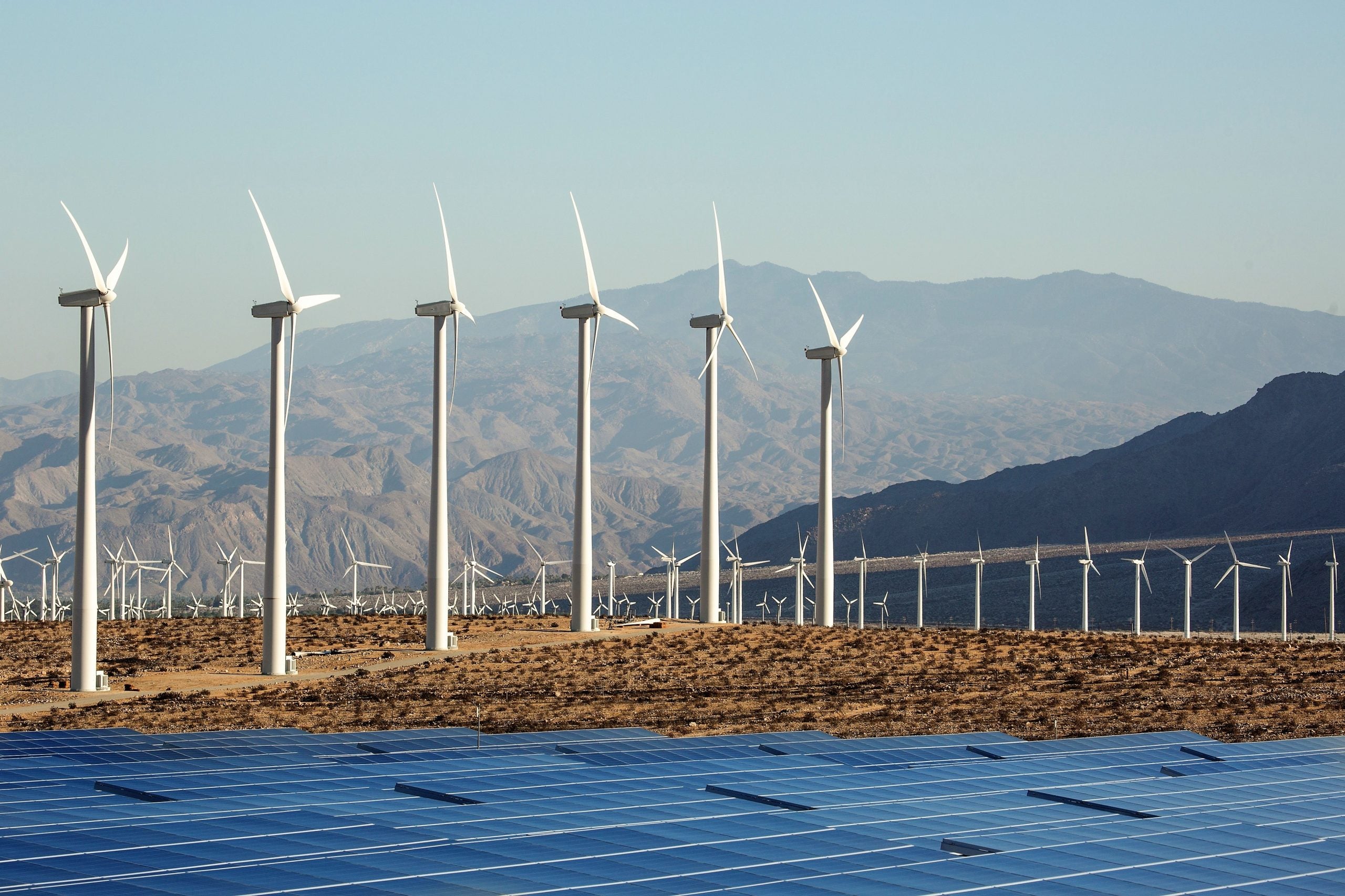
The scoop on the Scoping Plan: California’s draft plan misses the opportunity for greater climate ambition (Part 1)
This post was co-authored by Katelyn Roedner Sutter, Senior Manager for U.S. Climate at EDF.
In May, the California Air Resources Board released the draft 2022 Climate Change Scoping Plan, a roadmap that will guide the state toward meeting its 2030 emissions target and achieving net-zero emissions no later than 2045. This four-part series will unpack several key aspects of the plan and evaluate whether they raise California’s climate ambition to the levels needed to protect communities from the worst climate impacts.
California has long been known as a global climate leader, but that title has to be constantly re-earned as the climate crisis accelerates and new leaders raise the bar. The state’s Scoping Plan, which is updated every five years, presents a major opportunity to re-evaluate its strategies to drive down climate pollution based on the latest science, policy and technological developments.
The plan CARB released is based on one of four scenario pathways which were modeled by the energy consulting firm E3 and presented to the public in March of this year. E3 used the PATHWAYS model to identify technological, fuel, energy source and infrastructure outcomes that can enable the state to meet emission reduction goals, each with differing degrees of ambition and relying on different technological levers to achieve those goals. These scenarios provide a picture of California’s greenhouse gas sources and sinks, and CARB chose one of the proposed scenarios as the draft Scoping Plan.
In this draft, CARB intends to present a pathway to achieve net-zero greenhouse gas emissions. Unfortunately, with this proposal, CARB misses a critical opportunity for greater climate ambition. To meet the rising climate challenge, California needs to demonstrate a higher standard of climate leadership than is reflected in this draft. State leaders must ensure that California’s suite of climate policies will meet climate goals, and that they also maximize cuts in emissions this decade.
There is a lot to unpack in this 200+ page, draft Scoping Plan. Ahead of the upcoming comment period deadline for the plan on June 24, we will be releasing a series of blogs covering many of these areas in more detail, including electricity, transportation and emerging climate solutions. But first, we start at a high level with opportunities for more near-term ambition, particularly through one of the state’s marquee climate programs: cap and trade.
The ultimate test for the Scoping Plan: ramping up ambition now
While it is essential that California achieve net-zero greenhouse gas emissions no later than 2045, how and when these reductions take place is even more important. Emission reductions realized today are more valuable to the atmosphere than reductions in the future because it reduces the time pollution can damage the climate. Minimizing that cumulative build-up of climate pollution means accelerating reductions to prevent as much pollution from entering the atmosphere as possible in this decade. Put another way, the Scoping Plan should front-load climate ambition so we meet – and even beat – the 2030 goal and are on the path to net-zero. One opportunity to do this is in the power sector: the Scoping Plan should assume that California’s electric grid becomes cleaner, faster. This means clearly aligning with the state’s statutory requirement for a 100% clean grid by 2045 and establishing a clear downward trajectory with interim milestones for 2030 and 2035.
Every aspect of the Scoping Plan draft should be evaluated in terms of how it enables or inhibits near-term greenhouse gas reductions emissions in California, and whether it helps get California to net-zero with no residual emissions. In this series, we will be looking at how some of the key pieces of CARB’s latest plan for climate action meet this challenge, or how they should be improved in the final Scoping Plan adopted at the end of this year.
CARB must calibrate the emissions limit to ensure success by 2030
One of the key ways California can ensure emissions are reduced as much as possible in the near-term – and that we achieve the statutory 2030 climate goal – is through a more stringent economy-wide limit on emissions or the emissions “cap” in its cap-and-trade program. Since 2013, this program has played a vital role as a backstop among a suite of different climate and clean energy policies, ensuring that California meets its climate goals. Case in point: California met its 2020 emissions target four years early, and continues to grow its economy while lowering emissions.
In the draft Scoping Plan, CARB expects that cap-and-trade will “likely play a reduced role” in meeting the state’s climate targets, due to the suite of additional climate policies that have been passed by the legislature and issued by Governor Newsom. A reduced role for cap and trade is not inherently a problem – what matters most is that the cap is set such that it can be an effective backstop and provide the greatest possible certainty of meeting climate goals. If other programs deliver more reductions then there is less pressure on the cap, but if they don’t deliver expected results then a well-designed cap can pick up any slack.
To that end, it is encouraging that CARB is clearly recognizing the role of the emissions cap as the backstop, and that it should be relied on to close any emission gaps whether they be large or small. But to be an effective backstop, the cap must be calibrated to the 2030 goal. Specifically, the Scoping Plan should reflect a tighter emissions cap where the annual allowance budgets, and therefore the quantity of pollution, is lower to bring the cap in line with the state’s climate goals.
The draft Scoping Plan also anticipates a degree of emissions uncertainty from non-cap-and-trade policies that may impact their ability to achieve anticipated emission reductions as presented in the last 2017 Scoping Plan. This uncertainty is exactly what makes the emissions cap so critical to the success of California’s climate goals; the best way to mitigate uncertainty is with a firm, declining cap on emissions which is in line with the state’s emissions targets.
The fact that California has enacted more sectoral policies to cut climate pollution is a promising sign of further action on climate change; the cap provides certainty that the state achieves the necessary reductions on the timeline required. No other policy offers that kind of assurance.
What’s coming up: Major issue areas to explore
The draft Scoping Plan covers a lot of ground, but ultimately fails to live up to the level of climate leadership that is needed to accelerate California’s climate ambition this critical decade. Tightening the state’s emission cap is one priority change CARB needs to make before making the plan final.
In the coming weeks, we’ll be exploring other key aspects of the draft Scoping Plan that will make or break California’s ability to ramp up near-term ambition:
- Building a clean and reliable electric power sector. California will need to realize the full potential of a carbon-neutral electric grid by setting aggressive targets for the electricity sector, and the state has the ability to do so affordably and reliably. Michael Colvin, Director for Regulatory and Legislative Affairs on EDF’s Energy Transition team, will discuss how.
- California should better evaluate the role and timing of emerging technologies like carbon dioxide removal (CDR) and hydrogen. The draft Scoping Plan relies heavily on CDR and the rollout of hydrogen as key strategies to achieving the state’s emissions targets. There are significant outlying questions about when, where and how these technologies might be deployed in order to maximize their climate benefits.
- California is rightly going big on transportation electrification. One of the areas where this draft of the Scoping Plan clearly demonstrates CARB’s leadership is in vehicle electrification. We will dive further into the opportunities for success in cutting emissions in this sector, and discuss the pitfalls CARB needs to avoid.













One Comment
Suggestion: EDF and other stakeholders and advisory bodies involved with the Scoping Plan might have more influence on CARB’s policy if their proposals specifically cited the statutory basis of their recommendations. (I have submitted Scoping Plan comments under the subject heading “CARB should encourage and support early action to reduce greenhouse gas emissions”, which has relevance to this EDF article and is based on HSC 38566 and 38562(b)(1).)